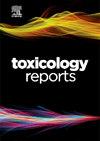An approach to predict and inhibit Amyloid Beta dimerization pattern in Alzheimer’s disease
Q1 Environmental Science
引用次数: 0
Abstract
Alzheimer’s Disease (AD) is one of the leading neurodegenerative diseases that affect the human population. Several hypotheses are in the pipeline to establish the commencement of this disease; however, the amyloid hypothesis is one of the most widely accepted ones. Amyloid plaques are rich in Amyloid Beta (Aβ) proteins, which are found in the brains of Alzheimer’s patients. They are the spliced product of a transmembrane protein called Amyloid Precursor Protein (APP); when they enter into the amylogenic pathway, they get cleaved simultaneously by Beta and Gamma Secretase and produce Aβ protein. Appearances of Amyloid plaques are the significant clinical hallmarks of this disease. AD is mainly present in two genetically distinct forms; sporadic and familial AD. Sporadic Alzheimer’s Disease (sAD) is marked by a later clinical onset of the disease, whereas, familial Alzheimer’s Disease (fAD) is an early onset of the disease with mendelian inheritance. Several mutations have been clinically reported in the last decades that have shown a direct link with fAD. Many of those mutations are reported to be present in the APP. In this study, we selected a few significant mutations present in the Aβ stretch of the APP and tried to differentiate the wild-type Aβ dimers formed in sAD and the mutant dimers formed in fAD through molecular modelling as there are no structures available from wet-lab studies till date. We analysed the binding interactions leading to formations of the dimers. Our next aim was to come up with a solution to treat AD using the method of drug repurposing. For that we used virtual screening and molecular docking simulations of the already existing anti-inflammatory drugs and studied their potency in resisting the formation of Aβ dimers. This is the first such report of drug repurposing for the treatment of AD, which might pave new pathways in therapy.
预测和抑制阿尔茨海默病中β淀粉样蛋白二聚化模式的方法。
阿尔茨海默病(AD)是影响人类的主要神经退行性疾病之一。目前正在研究几种假说,以确定这种疾病的起源;然而,淀粉样蛋白假说是最被广泛接受的假说之一。淀粉样斑块富含β淀粉样蛋白(Aβ),这种蛋白存在于阿尔茨海默病患者的大脑中。它们是一种叫做淀粉样前体蛋白(APP)的跨膜蛋白的剪接产物;当它们进入淀粉原途径时,它们被β和γ分泌酶同时切割并产生Aβ蛋白。淀粉样斑块的出现是本病的重要临床标志。阿尔茨海默病主要以两种不同的基因形式存在;散发性和家族性AD。散发性阿尔茨海默病(sAD)的特点是临床发病较晚,而家族性阿尔茨海默病(fAD)是一种具有孟德尔遗传的早期发病疾病。在过去的几十年里,临床报道了几种突变,表明它们与fAD有直接联系。据报道,这些突变中有许多存在于APP中。在本研究中,我们选择了APP中a β片段中存在的一些重要突变,并试图通过分子模型区分sAD中形成的野生型a β二聚体和fAD中形成的突变二聚体,因为迄今为止尚无湿实验室研究中可用的结构。我们分析了导致二聚体形成的结合相互作用。我们的下一个目标是用药物再利用的方法来治疗阿尔茨海默病。为此,我们对已有的抗炎药物进行了虚拟筛选和分子对接模拟,并研究了它们在抵抗Aβ二聚体形成方面的效力。这是首个将药物用于治疗阿尔茨海默病的报道,这可能为治疗开辟新的途径。
本文章由计算机程序翻译,如有差异,请以英文原文为准。
求助全文
约1分钟内获得全文
求助全文
来源期刊

Toxicology Reports
Environmental Science-Health, Toxicology and Mutagenesis
CiteScore
7.60
自引率
0.00%
发文量
228
审稿时长
11 weeks
 求助内容:
求助内容: 应助结果提醒方式:
应助结果提醒方式:


